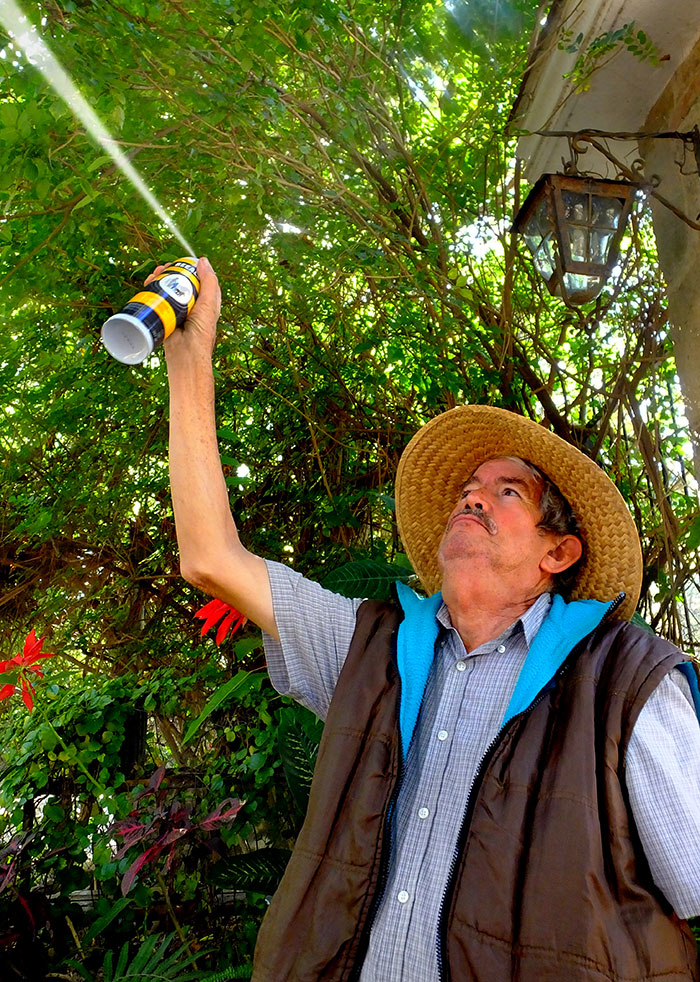| |
|
RECOMMENDATIONS FOR
AVOIDING OR SURVIVING
A MEXICAN KILLER-BEE ATTACK |
By AHB-attack survivors John Pint and Cesar Guardarrama 1. Listen! If you hear the loud hum of bees ahead, backtrack! Slowly go back the way you came. If it’s noisy because of cicadas, waterfalls or whatever, you have lost your early warning system and should be extremely cautious. 2. Don’t use lemony (citrus) or flowery scents. Any of the following, if scented, may provoke an attack: perfume, deodorant, hair spray, hair gel, cologne, aftershave, soap, shampoo, even chewing gum! Some say the smell of a freshly mown lawn will infuriate Africanized bees. 3. Don’t wear black or yellow. 4. Be quiet! If you're in the danger zone, they only need to hear you to attack you. 5. Remove or cover shiny objects such as carabiners, harness parts, earrings, rings, etc. 6. Wear long pants and have a windbreaker handy (tie it around your waist if it’s hot). Wear a hat with a chin strap. Put a beekeeper’s veil (or your own homemade version of one) as well as a pair of gloves (very handy in the thorny Mexican bush) into your backpack. 7. Carry Avapena, enough for all members of the hiking group. If stung, take one pill and head for a hospital. 8. Run! Bees can’t fly as fast as people can run. 9. Use smoke if you can, from a fire or even a single cigarette. It calms them. 10. Scrape to remove stings. Use a credit card or knife blade. Don’t pull out with your fingers as this will squeeze more venom into the victim. Tweezers can be very useful. 11. Put a can of BeeAlert in your backpack or vehicle. This is a non-toxic spray that can stop a bee attack without harming bees, humans or the environment . See How to quell a killer-bee attack: BeeAlert arrives in Mexico.  Spray
BeeAlert above your head with a circular motion to create a "halo of
protection" from attacking bees or wasps.
 |
